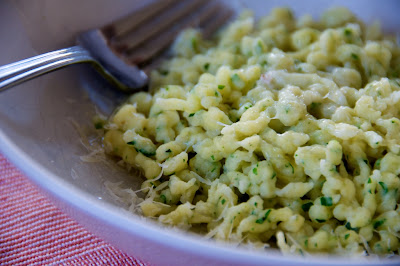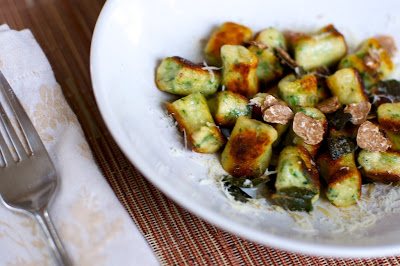
LICORICE FERNS (
Polypodium glycyrrhiza) are a West Coast species and most commonly grow from the trunks and horizontal limbs of old deciduous trees such as big-leaf maples, but they’ll also colonize rocks, nurse logs, and other support structures.
A network of root-like rhizomes, often hidden beneath a thick carpet of moss, anchors the ferns. To harvest, you peel back the moss, locate the rhizome, and gently pull apart a section. A single rhizome can be more than a foot long, with several ferns attached. Native Americans chewed them for their sweet, licorice-like taste and also as a medicinal that was thought to cure ailments such as colds and sore throats.
Licorice ferns are interesting edibles. More and more restaurants are using them to infuse sauces, make teas, or serve candied. The anise-like flavor is apparent when the root is nibbled raw, but in a sauce I find it much more subtle, with a touch of a licorice sensation on the tongue and a hint of sweetness. In general I’d say licorice ferns are more of a novelty, a way to add an exotic touch to a meal.
Broiled Halibut with Licorice Fern Beurre Blanc, Truffle Butter & Root Medley
This dish is adapted from a lunch I had at Etta’s Kitchen not too long ago, except that Etta’s used lingcod and some preserved lemon, and the licorice fern is my addition. It’s an easy yet elegant preparation, comfort all the way. The root medley, especially the parsnip and fennel, adds sweetness to echo the licorice fern in the sauce.
Beurre Blanc is a sauce every home cook should know. It’s a simple way to gussy up a basic meal of fish or vegetables, and it’s great for fancier occasions. You can make a butter extravaganza if you like, but I really prefer it a little less creamy.
Cut the root vegetables into 1-inch cubes. I used a parsnip, a turnip, two large carrots, a couple small potatoes, a fennel bulb, and maybe a third of a celery root to make the medley, which I slathered with olive oil and cooked at 350 degrees until tender, about 40 minutes. The root vegetables got plated, bathed in sauce, and topped with a broiled fillet of fish. A pat of truffle butter closed the deal.
The sauce here is a modified Beurre Blanc without the usual butter assault. As mentioned, I like this sauce slightly brothy, though no one would ever call it thin.

1 four-inch licorice fern root, peeled & chopped
1 heaping tbsp shallot, finely diced
1/4 cup champagne (or white wine) vinegar
1/4 cup white wine
1/2 cup stock, divided (chicken, vegetable, lobster)
1 stick cold butter, cut into 8 – 10 sections
2 tsp lemon juice
salt & white pepper
1. Combine chopped fern root, shallots, vinegar, and wine in small saucepan over medium heat. Reduce to 2 tablespoons.
2. Add half the stock and reduce to a few tablespoons. Add remainder of stock and reduce again.
3. Turn heat to low and start adding cold butter one section at a time, whisking frequently. Add another piece when the previous one has melted into the sauce. Don’t overheat or sauce will break. You can adjust the consistency by adding more butter or stock. For this dish I prefer it soupy. Finish the sauce with a splash of lemon juice off heat, whisk again, and strain.
Serves 4 modest portions.
Like this:
Like Loading...






























